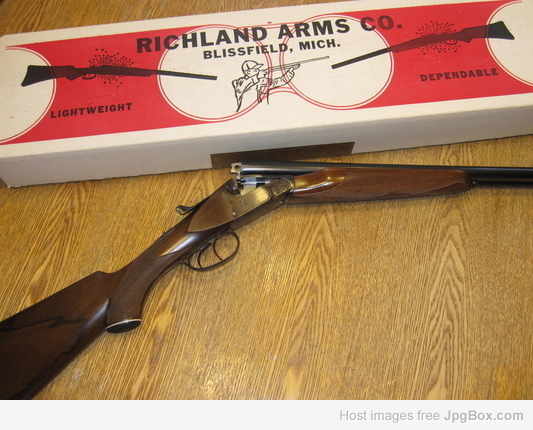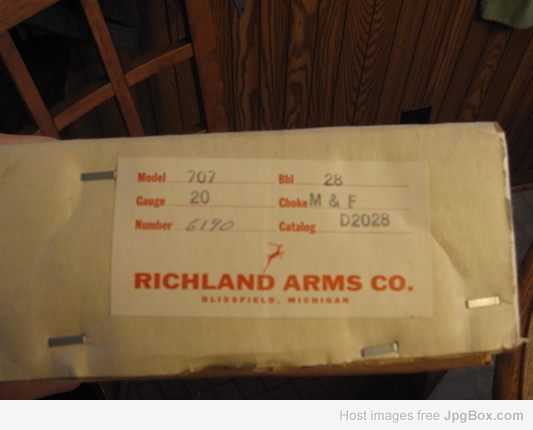Miller,
You probably didn't save the box-here is what it looked like:

When I took this gun out of the box, two years or so ago, it was the first time it had been out of it since it was purchased, the same way you got yours. Former owner seemed to think 1965. He has about 15 years on you, and lived to tell about the Battle off Samaar in WWII, but, his memory is a little fuzzy.
Mailman brought him a box with this gun.

The chokes are noted on the box as being Mod and Full. The marks from the proofhouse in VT tell a different story, however. They have the stamp of 2 and 3 stars, proofhouse speak for modified and improve modified. Francis Sell had very clear notions of what the bore of a 20 gauge gun should look like. His 1977 article spells out 1 1/2" forcing cones, 1 1/4" long chokes and .620 bores, about .005 overbore. The choke parallels were 1.110", and he was very specific about that. The barrels on my copy duplicate what he wrote, and are polished exceptionally fine, beautiful work on the interior polish and finish.
A copy of the 1968 Richland Arms catalog, featuring the 707:

The 20s were available with 30" tubes. The barrels on my gun measure
27 3/4", and, like yours, it comes in right around 6 1/4 lbs, not svelt for a 20, but, for one designed to launch 1 1/4 oz loads of bigger lead shot at waterfowl, probably realistic. I think it is just a few ozs heavier than my 16 gauge Nitro Special, but, that gun has 26" tubes. Neither gun is burdensome, IMHO.
By the time of the 1977 article, Mr. Sell had moved onto a Bernardelli two barrel set gun, with 28 and 30" tubes that he had restocked himself. It had a long, capped pistol grip, and a beavertail, very similar to the stocking of the Richland guns he wrote about earlier in his career.
It is common for people to contact me wanting to know more information on a French gun with no makers name on it. What is even a bit more odd is owning this gun, with both an importers name, and a manufacturers name on it, and finding not much about either. I can say for sure that a magazine writer somehow convinced an Italian firearms manufacturer to build 20 gauge 3" guns to his exact thoughts and then lent a hand to the importer handling the guns by doing some of the markerting.
If anyone has anything to add about the Richland Arms guns, I'd love to hear it. The model 200 Richland Arms guns in the same catalog ($50 cheaper than the Italian 707, not an insubstantial sum in the mid 1960s) were indeed available in 16 gauge, and I've never seen one. I have seen a Richland model 200 in 20 gauge with 22" factory barrels, and it was a fairly low quality piece.
Best,
Ted